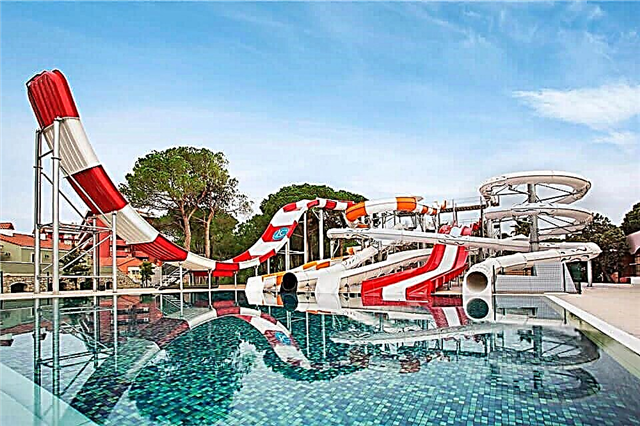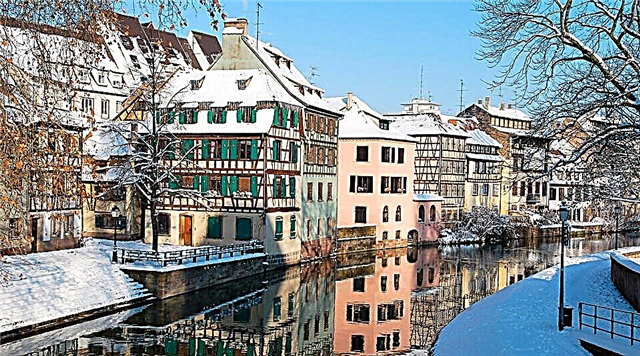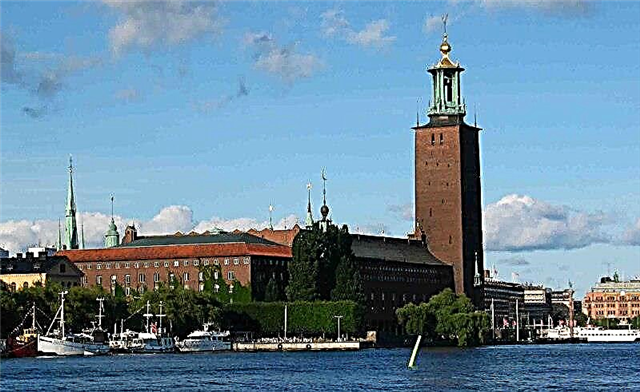You have already seen the main sights of Stockholm and now you are wondering what else to turn your attention to? It's time to go for a walk in the city center, which is called Norrmalm, visit Helgeandsholmen island and see one of the most prestigious urban areas - Ostermalm. A self-guided tour will give you the opportunity to admire the old Church of St. Clara and the Town Hall, walk along the pedestrian street Drottninggatan, see where the Swedish parliament meets and a number of other interesting places. So let's get started!
Town hall

Built at the beginning of the 20th century by the architect Ragnar Östberg, this building is one of the symbols of modern Stockholm. This is the place where Swedish officials hold meetings, and delegations gather here for negotiations.
We also recommend:
- Vasa Museum in Stockholm, Sweden
However, the Town Hall is known, first of all, for the fact that it is there that every year a banquet for Nobel laureates is held. First, this festive event was held in the Golden Hall of the Town Hall, which is decorated with gilded mosaics, consisting of a record number of tiles (there are more than 18 million of them!). Since 1974, the banquet has been held in the Blue Hall.

True, it is possible to walk through the halls of the City Hall only with a guided tour. On their own, tourists can stroll around the courtyard of the Town Hall. Be sure to climb to the observation deck - a beautiful view of the capital of Sweden opens up from a height of 106 meters.
Church of Saint Clare
This church has a long history that goes back almost seven and a half centuries. Magnus Ladulos ordered the foundation of a convent with a temple dedicated to Saint Clara, revered throughout Europe, on this site. But another Swedish ruler ordered the demolition of these buildings in the 1500s. Then they were erected again, and they operated for two centuries, until they were almost completely destroyed by fire. It took a long time to restore the building, and finally, in 1886, a tower was erected, which became the tallest building in Stockholm. She was 116 meters high.

The interior decoration of the church is striking in its wealth. These are stained-glass windows on the windows, a marble floor, a carved pulpit, and beautiful sculptures. But the main decoration is the organ that is still in operation.
Klara church
It is the largest railway station in the country. The station has been operating since 1871, and is currently considered the largest in the entire Scandinavian Peninsula and the second in terms of daily passenger traffic. And if you take into account the passengers of the metro station located at the Central Station, then it will be the first.
[tp_calendar_widget origin = MOW destination = STO responsive = true subid = ””]
Drottninggatan street
Its name is translated as "Queen's street". This is one of the largest pedestrianized streets in the Swedish capital. Its length is 1500 m.

This street begins with the sculpture of a beggar fox by Laura Ford. Thus, she wanted to draw attention to stray animals. At the opposite end of the street there is an observatory surrounded by a park.
Among the attractions of this street, an interesting one is the SOVA pharmacy, the oldest in the city. It began to work in 1761, and since the end of the 18th century it has never changed its location.

Interest is also attracted by the inscription, which stretches across the street. Its author, who laid the foundations of Swedish literature and theatrical art, Johan August Strindberg, lived on this street. A museum is now established in his house.
Royal Academy of Liberal Arts
Originally named the Royal Academy of Drawing, it was founded in the first half of the 18th century by order of Carl Gustav Tessin. An example for its charter was the main document of the Academy in Paris. Gradually, in addition to drawing, other sciences began to be taught in it - drawing lessons, architecture courses, lectures on art history appeared.
Rosenbad

This is a whole architectural complex. Here, employees of the Ministry of Foreign Affairs and employees of the Ministry of Justice, as well as employees of the government office, set up their offices. Among other things, Rosenbad is the home of the Swedish Prime Minister. Press conferences are held daily in the offices of this complex, meetings of major political figures are organized, and meetings of officials are held.
Curiously, these 17th century buildings originally functioned as public baths. They belonged to the Bond family. Now the restaurant of the same name is located here.
Riksdag

This is the Swedish parliament, which has only one chamber. Led by a tallyman, it has 349 members who are elected every four years.
The building of the Swedish Parliament is located on the Helgeandsholmen island, which is located in the center of Stockholm.
Medieval Museum

This museum is located, like the parliament, on the island. It appeared as a result of archaeological excavations in the early 80s of the XX century. At that time, fragments of the 16th century wall and the ancient cemetery “House of the Holy Spirit” were discovered, after which the island of Helgeandsholmen was named.
The peculiarity of the museum is that it is mainly located underground.
Royal Opera

The Opera Theater was founded in the second half of the 18th century. At the moment, they are engaged in both opera and ballet performances. There is also its own symphony orchestra, which gives independent concerts.
The first theater troupe was formed under the Swedish ruler Gustav III, a well-known adherent of the ideas of enlightened absolutism. He also ordered to build a separate building for her.
The actors of the Royal Opera also visited the Soviet Union on tour. This event happened in 1975.
Church of St. Jacob

Most tourists ignore this building. Compared to the main attractions, it does not impress with its architecture. And this, by the way, is one of the oldest buildings in Stockholm that has survived to this day.
The church, dedicated to the patron of the seafarers, was built at the end of the 16th century to replace another temple that used to be on this site, and whose history stretched back three centuries.
A number of artifacts are kept in this church. First of all, the baptismal font from the 1700s.
Royal drama theater

The theater dates back to 1788. It acquired its present appearance at the beginning of the twentieth century thanks to the architect Fredrik Lillekvist. The first performance in it was staged in 1908 and was called "Master Olof".
There is a Drama School at the theater, graduates of which were at one time many actors and directors, popular in the country.
Museum of Music

The collection of this museum is very extensive. In it you can see musical instruments of different times and peoples. The Swedish Museum of Music is considered to be one of the best in the world.
The museum building is a 17th century building; in the past it was a royal bakery.
It is very interesting to be in this museum. After all, a number of tools can be tested personally - they are marked with green squares. The things that cannot be touched are marked with a red circle. There are also very old exhibits. They are so fragile that they are placed behind glass, and what sounds they make can be heard through the nearby headphones.
Among the curious exhibits, one can single out a huge-sized music library with national music of different nations.
Also, the Swedish Museum of Music is famous for its original expositions. Among them, the opportunity to play a drum kit in headphones or learn how to move to a kind of music.
Army Museum

In it, you can trace the entire path of the formation and development of the Swedish army - from the history of the Vikings to the present day.
The first thing that guests of the museum see is a monument dedicated to those who fell in the battles near Poltava.It is located right at the entrance. Next, you can explore the collection of historical weapons. Moreover, each of its elements is provided with an inscription telling which film made this particular type of weapon famous.
This Swedish museum is different from most of its kind in the world. In it, the social overtones dominate the military. The purpose of the exhibitions is to show the entire horror of the war.
State Historical Museum

In comparison with all previous sights, this building is relatively new, it belongs to the 30-40 years of the twentieth century. In this museum you can learn about Swedish cultural history from the Stone Age to the 16th century. Further history is the lot of the Scandinavian Museum.
Of greatest interest is the Golden Room by architect Leif Blomberg. It got its name due to the fact that it contains an extensive collection of gold jewelry.











